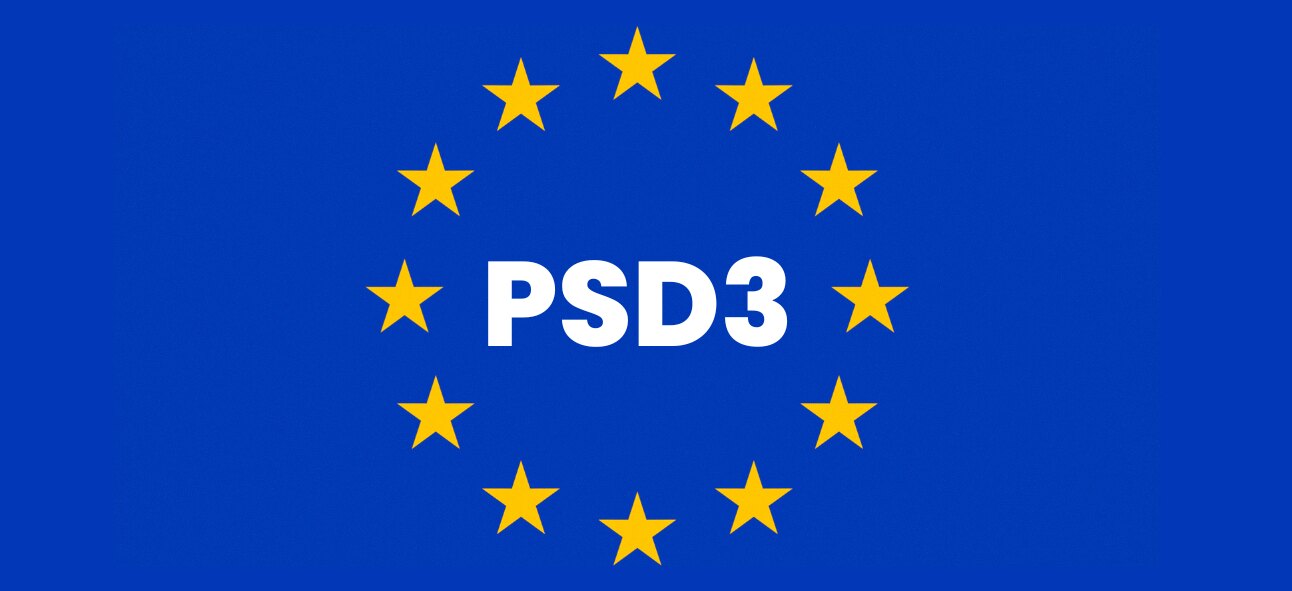Open banking has ushered in a new era of digital payments in Europe. It has become possible for consumers and businesses to make payments instantly and easily, without waiting for days. So much has been the convenience and flexibility, it has changed the way people pay in the future. But such a fast-growing space also needs regulation. And authorities in Europe seem to agree. On May 10, 2022, the European Commission launched the EU public consultations on PSD2. Based on this, EU Commissioners have stated that new rules and amendments to PSD2 are likely to happen.
So, we are getting a PSD3. But what is it and why should you know?
What is PSD3?
The new PSD3 norm aims to assist the ongoing push towards a single EU retail market and build cost-effective cross-border instant payments. PSD3 seeks to broaden the scope of PSD2 and overcome the challenges and risks of PSD2. It also aims to bring unregulated areas like new tech and payment methods like BNPL or cryptos. It aims to strengthen SCA (strong customer authentication) requirements, and include more precise API standards.
Both PSD3 and PSD2 are iterations of the Payment Services Directive, an EU Directive administered by the European Commission. It aims to regulate all digital payments, payment services and service providers, and the banking ecosystem throughout the EU and European Economic Area. The first PSD was passed in 2007, followed by PSD2 in 2015. PSD3 is the new proposed revision of this directive.
Is it mandatory in Europe? Is there a deadline?
PSD3 is still in its consultation phase and there is not mandatory yet. No deadline has been set so far; so, we will have to watch this space.
Why the need to move from PSD2 to PSD3?
PSD2 changed the EU payments landscape by bringing in competition and innovation and making payments safe and fast. Its purpose has been to aid innovation and increase healthy participation in the payments ecosystem, in the context of open finance and open banking. It further aimed to protect the rights of consumers and payment service users and make cross-border European payments safe.
PSD2 allowed consumers for the first time to work with their banks and PSPs and gain access to financial data as well as the ability to initiate instant payments by giving their consent to a third party. But as new players and new solutions like digital wallets, BNPL, and crypto assets continue to emerge, the need for newer rules is also being felt to make payments safer and better. PSD3 seeks to address the drawbacks of PSD2 and cover areas that are important for the EU payments landscape while aligning with the European legal framework in a better way.
Read More: How Can E-commerce Merchants Boost Sales with Buy Now Pay Later
How PSD3 will Impact Your Business
PSD3 will extend the scope of PSD2 in payments. This includes a better distinction between online and offline payments, a broader understanding of “sensitive” customer data, and merchant-initiated transactions. PSD2 brought in stronger authentication processes such as multi-factor authentication (MFA). Coupled with advanced AI-powered fraud tools by modern PSPs, it has become easier to monitor transactions in real-time and prevent fraud. PSD3 will further build on this with to bring in stronger security and transparency features and enhanced fraud protection.
API standardization for better access to financial data by all players including merchants and PSPs, in a more secure way is another area that PSD3 will address. We can expect PSD3 compliance to be mandatory for all businesses that accept digital payments and for banks and PSPs that process and manage these payments. But, no deadline as such has been set for this yet.
Final Thoughts
The Payment Services Directives have done much to boost healthy growth and competition in the European payments ecosystem. And protect consumers and businesses. PSD3 will introduce new steps in the push to create a single digital market in the EU by reducing barriers to entry and strengthening the existing framework. It will create a richer ecosystem for open finance and higher security for all.
There is still time before PSD3 comes into action. And as regulators and stakeholders consider the many factors that are vital to the journey, all eyes are on these new developments. But one thing is certain – this move to overcome market fragmentation and create a more unified pan-EU payments network is surely on its way to becoming the new reality.
Watch this space.

Emmanuel Kirse, or Emma as his colleagues refer to him, spent the last decade building and managing teams who developed Novalnet’s innovative payment ecosystem with all its value-added features. Emmanuel was also instrumental in high-value technology partnerships with SAP, Salesforce, etc.












